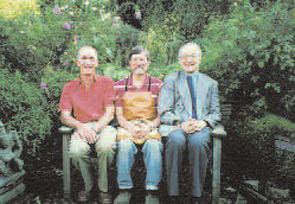In practice, the BILAG Index requires few blood or urine tests and the bulk of the form can be completed on paper or a computer in three or four minutes. The form asks the clinician to determine if a clinical feature, which must be due to lupus, is absent or present. If present, is it better, worse, or the same as a month ago or a new or recurrent problem; these data are converted into A–E scores for each organ/system.
Although somewhat antithetical the concept, the BILAG letter scores were assigned numbers so that they could be converted into a global score and thus compared more easily with SLEDAI and SLAM. In spite of their varying origins, there is a strong correlation among these three indices and also, as shown in later studies, with the European Community Lupus Activity Measure (ECLAM), which was devised by Stephano Bombardieri, MD, and colleagues.6,7 The choice of the A=9, B=3, C=1, D/E=0 point notation, while widely used now, was a rather spur-of-the-moment decision. BILAG is currently performing more objective modeling studies to determine how valid this numbering system is. It is likely that the C score will be downgraded.
By 1991, most necessary comparisons had been undertaken; the NATO group developed a damage index and selected the patient self-assessment index.8,9 The group was named the Systemic Lupus International Collaborating Clinics (SLICC) and grew for the first time in 1991, when Dr. Gladman was appointed its first chair. During the 1990s, a number of distinguished rheumatologists joined, including Michelle Petri, MD, MPH, Johns Hopkins University, Baltimore; Ellen Ginzler, MD, MPH, SUNY Downstate, Brooklyn; John Hanly, MD, Dalhousie University in Halifax, Nova Scotia; Jorge Sanchez-Guerro, MD, Instituto Nacional de Ciencias Medicas y Nutricion, Mexico City; Jill Buyon, MD, New York University School of Medicine; and Rosalind Ramsey-Goldman, MD, DrPH, Northwestern University, Chicago, (who succeeded me as chair in 2004).

FDA and Tech Boosts
The turning point for the BILAG Index came in 2003 when the Food and Drug Administration (FDA), faced with the prospect of many drug companies wanting to do lupus trials, held a meeting to review the indices available for capturing disease activity in patients with lupus. The FDA concluded that the BILAG Index would be of particular value for clinical trials in SLE, although no member of BILAG was present. The index in its classic form is now widely used in clinical trials around the world.

